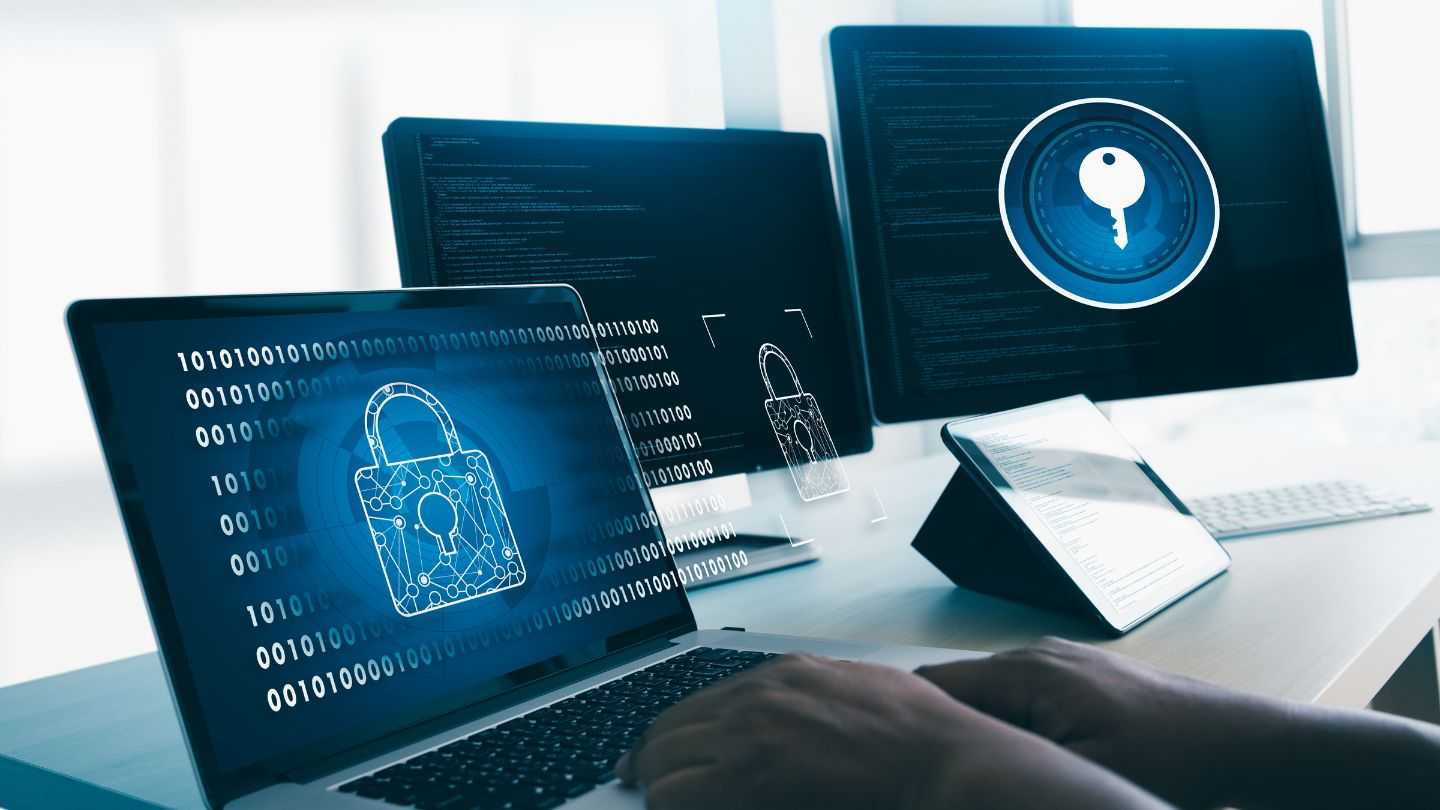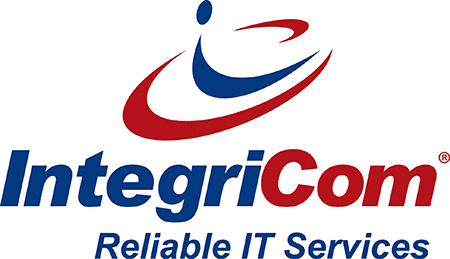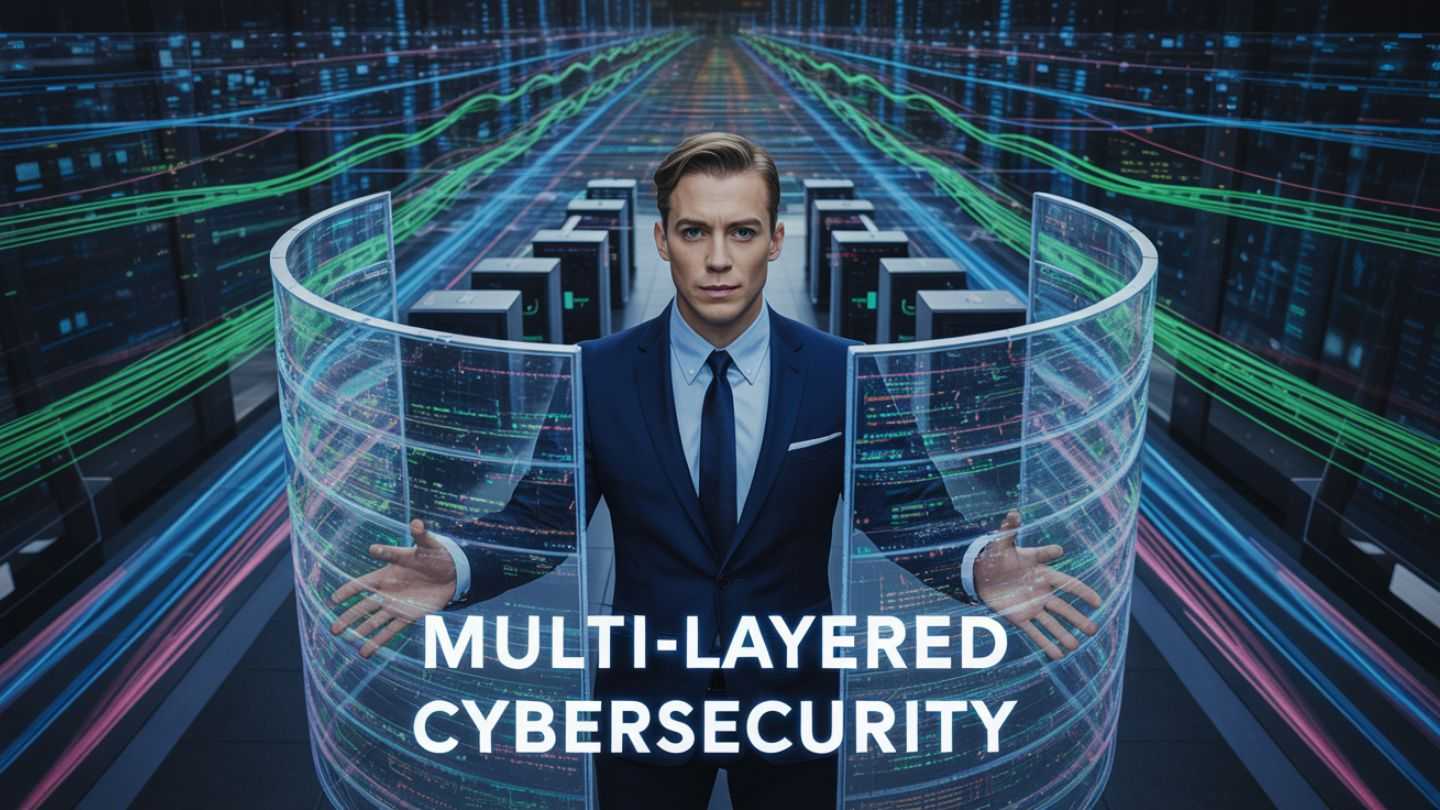Key Takeaways
- A multi-layered cybersecurity strategy protects against a wide range of threats and is far more resilient than single-layer defenses.
- Managed IT Services providers deliver customized protection with proactive threat management, continuous monitoring, and compliance expertise.
- Regular audits, user training, and security tools such as Multi-Factor Authentication (MFA) form the backbone of a strong cybersecurity posture.
The Importance of a Multi-Layered Cybersecurity Approach

A layered security approach isn’t just a technical best practice; it’s a business necessity. Cyber threats today are sophisticated, often combining phishing attempts, malware, and network infiltration in a single campaign. By layering defenses, you make it far harder for attackers to find a weak point. Building a layered defense not only strengthens protection against attacks but also improves overall cyber resilience, ensuring your business can quickly recover and adapt if a breach occurs.
For example, if ransomware slips past your firewall, antivirus tools and endpoint detection systems can still catch it. If a hacker guesses a password, MFA can block them before they access sensitive data. This “defense in depth” means there’s always another barrier in place.
With data breaches affecting millions every year, relying on a single security measure is no longer enough. Managed IT Services providers bring expertise in designing these layered systems, tailoring them to your specific risks and industry compliance requirements.
Understanding Multi-Layered Cybersecurity

At its core, multi-layered cybersecurity uses several protection measures working together:
- Network Security – Firewalls, intrusion detection, and secure VPNs keep external threats at bay.
- Endpoint Protection – Antivirus, EDR (Endpoint Detection and Response), and Mobile Device Management (MDM) secure every laptop, desktop, and mobile device.
- Data Protection – Encryption, masking, and access controls safeguard sensitive files, whether stored locally or in the cloud.
A good example comes from small retail businesses. A single-store retailer might not think they’re a target until an attacker installs credit card skimming malware. With multiple layers, the intrusion detection system spots the unusual data traffic, the antivirus quarantines the malware, and MFA ensures no unauthorized logins occur. These layers are designed to counteract a variety of common cybersecurity attacks, from phishing and ransomware to insider threats, creating a stronger safety net for your business.
Why a Multi-Layered Approach is Essential
Cybercriminals don’t stop at one tactic, so defenses can’t stop at one tool. Each layer in the system addresses a different weakness. If one fails, another is ready.
Imagine your email server is compromised by a phishing attack. Without layers, attackers could move freely through your network. With a layered approach, access controls, network monitoring, and data encryption limit the damage, giving your IT team time to shut it down.
This redundancy, backed by continuous monitoring, turns a potential disaster into a manageable incident.
Role of Managed IT Services in Building Cybersecurity Layers

Managed IT Services providers go beyond installing software. They take responsibility for:
- Comprehensive Security Assessments – Identifying vulnerabilities before attackers do.
- Deployment of Advanced Security Tools – Leveraging AI-driven threat detection and automated response.
- Continuous Monitoring – Watching your systems around the clock.
- Security Awareness Training – Teaching your team how to recognize and avoid common attacks.
For instance, a mid-sized law firm might have sensitive client data spread across desktops, laptops, and cloud storage. A Managed IT Services provider ensures every access point is secure, employees are trained to spot phishing, and all systems meet regulatory compliance. This approach aligns with the defense in depth model, where multiple security measures are strategically combined to reduce the likelihood of a successful attack.
Enhancing Security with Multi-Factor Authentication (MFA)
Passwords alone are no match for determined cybercriminals. Multi-Factor Authentication (MFA) adds a second or even third verification step, like a code sent to a phone or biometric scan, before granting access. Even if a password is stolen, attackers can’t get in without the additional verification.
Rolling out MFA across an organization can dramatically cut down on unauthorized access incidents. A Managed IT Services provider handles integration, training, and ongoing support, so adoption is smooth and effective.
The Importance of Regular Security Audits
Regular audits are like health check-ups for your cybersecurity. They reveal hidden weaknesses, ensure compliance, and verify that all layers are working together. For example, an audit might uncover outdated firewall rules that leave part of your network exposed. Catching and fixing it before attackers do could save you from a costly breach.
Leveraging Cloud Services for Enhanced Security
Cloud services bring flexibility, scalability, and built-in redundancy. Secure cloud storage, automated backups, and cloud-based security tools ensure data is safe even in the event of hardware failure or disaster. A Managed IT Services provider helps you choose and configure cloud solutions that enhance your security posture while supporting your business operations.
Strengthening Your Business with Layered Cybersecurity
Building a multi-layered cybersecurity framework is no longer optional; it’s essential for safeguarding sensitive data, maintaining operational continuity, and meeting compliance requirements. By combining network security, endpoint protection, data safeguards, and employee training, businesses can create a defense system capable of detecting, preventing, and responding to a wide range of cyber threats. This layered approach not only minimizes risk but also instills confidence that your operations can withstand evolving challenges in today’s digital environment.
At IntegriCom, we deliver comprehensive managed IT services in Lawrenceville that are designed to protect your business from every angle. Our proactive monitoring, tailored security strategies, and commitment to your success mean you’re never facing cyber threats alone. Partner with us to strengthen your security posture, safeguard your data, and ensure your business is prepared for whatever the future holds.
Frequently Asked Questions
What is multi-layered cybersecurity?
Multi-layered cybersecurity is a strategy that uses multiple security measures, such as firewalls, antivirus software, encryption, and user training, to protect an organization’s systems and data. Each layer addresses different vulnerabilities, creating a stronger overall defense.
Why is a single-layer security approach not enough?
Cyber threats are complex and often combine multiple attack methods. If one security measure fails in a single-layer approach, there’s nothing to stop an attacker. A layered strategy ensures that even if one defense is breached, others remain in place to block the threat.
How can a Managed IT Services provider improve my cybersecurity?
A Managed IT Services provider offers expertise, 24/7 monitoring, advanced security tools, and regular audits to identify vulnerabilities. They also create tailored security strategies to fit your business needs and ensure compliance with industry regulations.
What role does employee training play in cybersecurity?
Employees are often the first line of defense against cyber threats. Security awareness training teaches staff how to spot phishing emails, avoid malicious links, and follow safe online practices, reducing the risk of human error leading to breaches.
Is Multi-Factor Authentication (MFA) really necessary?
Yes. MFA adds an extra layer of protection by requiring more than one form of verification before granting access. This makes it much harder for attackers to gain entry, even if they manage to steal a password.


